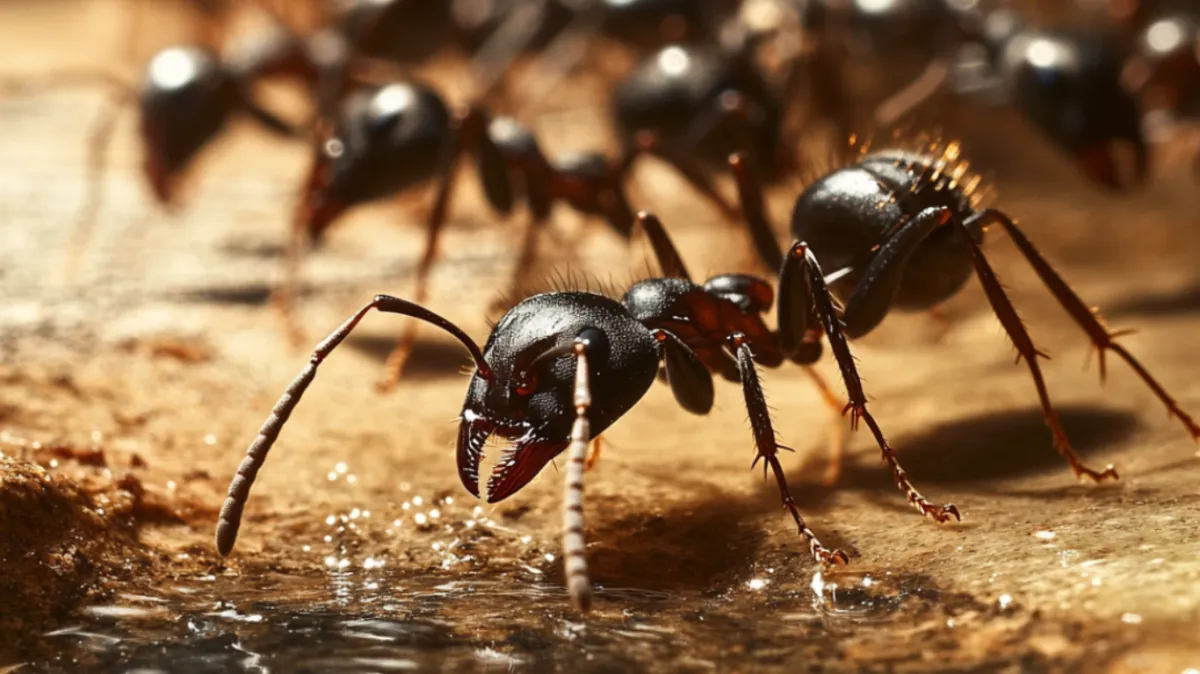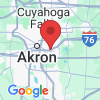
The Akron Pest Journal
Pierce Pest Control Akron Journal

Ant Prevention: Stopping Spring’s Most Persistent Pests
Why Do Ants Invade Homes in Spring?
Spring is prime time for ant infestations as warmer temperatures, food scarcity, and breeding cycles push ants into homes in search of survival essentials. What starts as a few ants exploring your kitchen can quickly escalate into a full-blown infestation if not addressed early.
Here are the four main reasons ants become more active in spring:
1: Warmer Temperatures: Ants Wake Up & Start Foraging
As temperatures rise above 50°F, ants emerge from their winter nests and become more active.
In colder months, ant colonies remain underground in a dormant state, slowing their movement and food consumption.
Once spring arrives, their metabolism increases, and they start aggressively searching for food and expanding their territories.
Why this matters:
Ants travel longer distances and explore new areas, increasing their likelihood of entering homes.
More ants scouting indoors means higher chances of an infestation if an easy food source is found.
2: Food Shortages: Ants Are Desperate for New Food Sources
During winter, ants store food inside their nests and consume their reserves while staying underground.
By spring, these reserves are depleted, forcing ants to actively seek new food sources.
Common household attractants for ants:
Crumbs & food residue left on countertops or floors.
Pet food left out overnight.
Sugary spills (juice, honey, soda) not cleaned properly.
Unsealed trash bins or compost piles that provide easy access to food waste.
3: Breeding Season: Ant Colonies Expand Rapidly
Spring is peak breeding season for ants, meaning colonies grow faster and require more food and space.
The queen ant can lay thousands of eggs, with worker ants emerging in just one to two weeks.
Why this matters:
Colonies multiply quickly, making early intervention essential.
More worker ants mean higher foraging activity, increasing their presence indoors.
If not controlled, a small ant sighting can turn into a large-scale infestation within weeks.
4: Moisture Attraction: Ants Seek Damp Environments
Water is just as important as food for ants, and they are naturally attracted to moist environments.
Common household areas where ants find moisture:
Leaky faucets & pipes (especially under sinks).
Damp wood in crawl spaces or behind walls.
Standing water in bathrooms, basements, or laundry rooms.
Condensation buildup on windows or AC units.Why this matters:
Carpenter ants nest in damp, rotting wood, which can lead to serious structural damage over time.
Moisture-rich areas offer an ideal habitat for ant colonies, making them harder to eliminate.
How to Keep Ants Out of Your Home This Spring
1: Block Entry Points & Seal Gaps
Ants can squeeze through even the smallest cracks in walls, windows, and doors.
Inspect your home for gaps, crevices, and openings that ants may use to enter.
Seal off these entry points with:
Caulk or weather stripping around windows and doors.
Steel wool or silicone sealant to block small cracks in walls or baseboards.
Fine mesh screens on vents and windows.Pro Tip: Pay special attention to kitchens, bathrooms, and basements, as these areas are most prone to ant activity.
2: Keep Your Home Clean & Eliminate Food Sources
Ants follow food trails left behind by even the tiniest crumbs.
Reduce their attraction to your home by:
Wiping down kitchen counters and tables daily.
Vacuuming and sweeping floors to remove crumbs and food particles.
Storing food in airtight containers, especially sugary items like honey, syrup, and fruit.Taking out the trash regularly and keeping garbage bins tightly sealed.
Pro Tip: Even pet food can attract ants! Keep pet bowls clean and don’t leave food out overnight.
3: Eliminate Moisture & Repair Leaks
Ants are drawn to moisture-rich environments, making bathrooms, kitchens, and basements prime targets.
Prevent water-related ant problems by:
Fixing leaky pipes and faucets to eliminate excess moisture.
Using a dehumidifier in damp areas like basements.
Checking under sinks for pooling water.
Sealing cracks around tubs and showers where water can collect.Pro Tip: Carpenter ants, which can cause structural damage, are particularly drawn to rotting or damp wood—so replace or repair water-damaged areas ASAP.
4: Use Natural Ant Deterrents
Certain household ingredients can help repel ants naturally without harsh chemicals.
Try these simple, effective remedies:
Vinegar spray – Mix equal parts vinegar and water and spray it along entry points and trails.
Cinnamon, cayenne pepper, or coffee grounds – Sprinkle in areas where ants are entering.
Lemon juice – The acidic scent disrupts ant trails and masks food odors.
Diatomaceous earth (DE) – A non-toxic powder that dehydrates ants upon contact.Pro Tip: Refresh these natural deterrents every few days to maintain effectiveness.
5: Trim Outdoor Vegetation & Remove Nesting Areas
Ants often enter homes from outdoor colonies. Prevent this by:
Trimming trees and bushes that touch your house.
Keeping firewood and mulch away from foundations (ants love nesting in these materials).
Eliminating standing water in yard areas to discourage moisture-seeking ants.
Clearing away leaves, woodpiles, and debris where ants may build nests.Pro Tip: If you see ant trails leading from your yard into your home, track them to locate their colony for effective treatment.
What to Do If You Already Have an Ant Infestation
If you’re already seeing large numbers of ants, follow these steps:
1: Identify the Ant Species – Knowing whether you have sugar ants, carpenter ants, or fire ants helps determine the best treatment.
2: Use Bait Stations – Ant baits attract foraging ants, allowing them to carry poison back to the colony, eliminating it at the source.
3: Do Not Squash Individual Ants – Squashing ants releases pheromones, attracting even more ants. Instead, use proper ant control treatments.
4: Wipe Down Trails with Vinegar – This removes the chemical scent that other ants follow.
5: Call a Professional – If the problem persists, professional pest control is the most effective long-term solution.
If you’re already seeing signs of ants, acting quickly is key—and Pierce Pest Control is here to help with expert treatments and long-term solutions.
Visit [https://piercepestcontroloh.com/] to get started on a custom ant prevention plan for your home!

Schedule a Pest Inspection
Ready to schedule a pest inspection? Contact us today.

